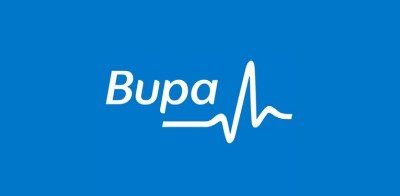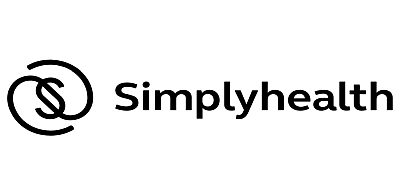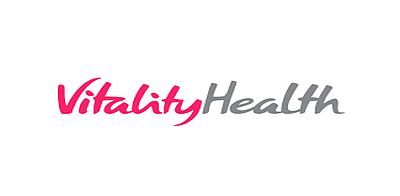
Osteopathy for Headaches Surrey

Headaches can be debilitating to deal with. The most challenging part of living with recurring headaches is the intensity of pain associated with them. This adds to the number of over the counter painkillers patients need to manage the pain, which can lead to medication overuse headaches. Furthermore, headaches can severely affect the active parts of one’s life, both physically and mentally.
Headaches can render people incapable of focussing on the more demanding parts of their life like work or studies. Not only does this affect their daily schedule, but they also have to deal with pain.
According to the National Headache Foundation, there are 30 types of headaches, although many can be sub-categorised. These range from psychosomatic to muscular, hormonal to skeletal to pathologic and it can be difficult to make a clear diagnosis. This makes living with headaches more challenging. To understand how to manage headaches, it’s important to be aware of the different types of headaches you may be experiencing and what causes them.
Types of Headaches and their causes
Headaches are defined as a throbbing and uncomfortable pain felt in any region of the head. According to the World Health Organisation, one out of twenty adults suffers from a headache every day. While headaches are characterised mainly by pain in the head, their intensity, duration, and causes vary from one person to another.
There are two broad categories of headaches – primary and secondary.
Primary Headaches
Primary headaches take place when the main reason behind the headache is the pain in the head. This means that the headache is not caused by external reasons like flu, illness, psychological distress, and allergies.
There are two types of primary headaches. They are:
- Episodic Headaches – Episodic headaches occur in episodes. There is no fixed amount of time between these headaches. During each episode, the headache can last from half an hour to more than two hours.
- Chronic Headaches – Chronic headaches are relatively more regular than episodic headaches. People who suffer from chronic headaches experience pain most days of the month. In severe cases, the headache can last for days on end. Most patients with chronic headaches need to have a proper pain management plan.
Primary headaches can be further classified. We will look at three common types that we regularly see in the clinic:
Tension headaches are the second most common types of headaches after Migraines. They are often caused by stress, anxiety, and depression. Pain associated with tension headaches can be felt with tenderness around the neck, forehead, scalp, and shoulders.
People often point out that tension headaches feel like there’s a tight band around their forehead. Typically, tension headaches are episodic, but in serious cases, they can be chronic as well.
Tension headaches can be a result of muscle strain in the jaw, neck, and shoulders. For example, people tend to clench their jaw without realising. This puts pressure on the temporalis and masseter muscles. These muscles are engaged in closing the mouth and chewing. When the jaw is clenched and these muscles are placed under pressure, it can cause a tension headache.
In most cases, clenching of the jaw is an involuntary action. That’s why the patient needs to make a conscious habit not to clench the jaw. This will help reduce headaches considerably.
Some common causes of tension headaches are poor posture, stress, lack of movement, alcohol, fatigue, psychological discomfort, smoking, flu, lack of sleep, missing out on meals, caffeine, insufficient water intake, and strained eyes.
Tension headaches cause a dull pain, accompanied by tenderness around the forehead and the scalp. These headaches start out mild. While they can be confused with Migraines in cases of severe pain, they don’t exhibit symptoms of Migraine like nausea and vomiting.
Cluster headaches are identified by a sharp and burning pain. The pain caused by cluster headaches is felt behind either eye and one side of the face. While it’s not a common occurrence, sometimes these headaches are accompanied by swelling, sweating, flushing, and redness.
When there’s an irregular dilation or widening of the blood vessels that are responsible for providing blood to the brain and the face, it leads to cluster headaches.
While the cause of this dilation is unexplained, researchers have found that cluster headaches are a result of aberrations in the working of the hypothalamus. The hypothalamus is largely responsible for regulating blood pressure, body temperature, hormones, and sleep.
Furthermore, cluster headaches have been known to occur due to an abrupt discharge of mood-regulating chemicals such as serotonin and allergen-fighting chemicals like histamine.
The pain associated with cluster headaches usually takes place on one side of the head. It’s commonly situated right behind the eye. Please note that in some cases, the headache can shift from one side to the other. This can feel stressful to deal with, further leading to anxiety and panic.
The headache can spread to other parts of the face like the forehead, teeth, nose, and neck. Some common symptoms of cluster headaches are irritability, redness in the eye, light sensitivity, running nose, flushed face, nausea, tearing up severely, and droopy eyelids.
Migraines are perhaps the most common types of primary headache. They are characterised by a deep, pulsating pain from within the head. Migraine pain can last for days on end, and it seriously limits the patient’s ability to perform daily tasks. People who experience Migraine pain often feel a throbbing discomfort on one side of the head.
Migraines are often caused by sensitivity to light and/or sound. This is why Migraine pain sometimes occurs with nausea and vomiting. People who experience intense Migraine attacks can anticipate visual disturbances like shimmering and flashing lights, zigzag lines, stars, and blind spots right before they get a Migraine. This is known as a Migraine Aura.
Migraine Auras can result in tingling or pinching in the arm, and for a few people, trouble speaking. Please note that these symptoms of Migraine are also experienced during a stroke. If you are susceptible to Migraine attacks but haven’t felt these symptoms before, then it’s advisable to seek medical attention as soon as possible.
Migraines are often triggered by anxiety, contraceptives, alcohol, caffeine, hormonal changes, and menopause. Furthermore, Migraines are classified as a type of psychosomatic disorder.
Some people who suffer from Migraines can exhibit symptoms a day or two before a Migraine attack. This is called the Prodrome Phase. During this phase, people experience symptoms like agitation, stiff neck, depression, irregular bowel movements or constipation, and craving certain foods.
Furthermore, several environmental factors contribute to Migraine triggers. These factors include disturbed sleeping patterns, dehydration, fluctuating hormones, and missing meals.
Secondary Headaches
Secondary headaches can be defined by pain that occurs due to ongoing discomfort in the body. The primary reason behind secondary headaches is not located in the brain, but it’s associated with other aspects of the body. This includes indulging in certain foods, flu, and allergies.
Secondary headaches are often caused by underlying conditions such as high blood pressure, infection, neck and shoulder injuries. Please note that if the cause of your secondary headache becomes relatively more regular, than it’s at a high risk of becoming chronic.
There are several types of secondary headaches. They are:
This is a type of headache that originates from either the joints or soft tissue of the neck. It is worse when the head and neck are moved or held in a particular way, which differs from person to person.
This can be caused by being stuck in one position for too long, such as at a desk or sleeping awkwardly, after trauma, e.g. fractures, a road traffic accident, heading a football, or a rugby tackle, increased stress, working out or training incorrectly or too much. Those in professions who have bad posture due to a hunching habit, labourers who perform heavy-duty work, stylists who have to slouch for their work often suffer from neck stiffness.
The pain is often felt at the back of the head on one side, and the back and shoulders can be tender to touch. The pain can sometimes radiate from the back of the head or radiate to the shoulder or arm on the affected side. There is also very likely to be restricted movement of the neck and head, and sometimes shoulder movement can be restricted as well.
As we know by now, cervicogenic headaches result from stiffness in the neck, associated with the vertebrae at the top of the spine, also known as cervical vertebrae.
However, these headaches can also result from certain medical conditions including tumours, infections and upper spine arthritis.
In several cases, secondary headaches are caused as a reaction to allergies. The focus area of pain induced by allergy headaches is the sinus and the front of the head. This can further lead to discomfort all over the face.
More often than not, Migraines are misdiagnosed as allergy or sinus headaches. However, when it comes to people who are prone to allergies, these allergy headaches are actually Migraines.
If the sinus pressure gets built, it needs to be reduced to treat the sinus headache. Doctors usually prescribe over the counter decongestants and nasal sprays to help with the sinus pressure.
Please note that a sinus headache is a common symptom of sinus infection. In that case, it’s recommended to visit your doctor without delay.
Caffeine alters the chemistry of the brain. It changes the flow of blood to the brain. Consuming more caffeine than needed can lead to a headache. Similarly, if you’re trying to cut back on your caffeine intake and end up restricting your brain from caffeine entirely, it can lead to a headache.
This is because, by the time you realise you’re drinking too much caffeine, your brain has already gotten used to it. Cutting off your brain’s usual supply of caffeine can lead to a painful headache. Please note that people who have Migraines are more susceptible to triggering headaches due to their caffeine habits.
However, it’s essential to remember that not everybody will experience withdrawal symptoms due to coffee. It depends on the intensity of the brain’s dependence on it. Furthermore, if you would like to cut down on caffeine, experts suggest doing so gradually instead of immediately.
Women most prominently experience hormone headaches. This is due to the common fluctuation of hormones. Anything that alters estrogen levels can lead to a hormone headache. This includes the use of birth control pills and pregnancy.
Another leading cause of hormone headaches in women is menstruation. Some women experience it as a symptom of their pre-menstrual cycle, leading up to their actual menstruation cycle. Headaches that occur during, before, or after the cycle are known as menstrual Migraines.
At least 60% of women with Migraine as a pre-existing condition experience headaches during their menses cycle. Engaging in activities like yoga, acupuncture, a proper and healthy diet are some things that can help deal with menstrual Migraines.
Often caused due to high blood pressure, hypertension headaches are the sign of an emergency. These headaches take place when blood pressure is severely elevated. Hypertension headaches express pain on both sides of the head. Please note that you must not exert yourself when you have a hypertension headache because this will worsen the pain.
These headaches cause throbbing pain in the head. This can be accompanied by serious symptoms like tingling, numbness, blurred vision, bleeding nose, pain in the chest, and difficulty catching your breath.
If you have high blood pressure and are suffering from a hypertension headache, you should call for medical assistance right away.
Rebound headaches feel a lot like tension headaches and Migraines. They are either characterised by dull, throbbing pain or a burning and piercing pain. Rebound headaches are also known as medication overuse headaches.
People who habitually take over the counter painkillers are highly sensitive to rebound headaches. They are common occurrences with the overuse of medications like Paracetamol ibuprofen, aspirin, and naproxen, especially when they are taken for more than 15 days during the span of the month.
If you’re experiencing rebound headaches from pain medication, then you should slowly come off these medicines. When taken frequently, they can cause a headache instead of relieving it.
Exertion headaches are caused by intense physical activities that go on for longer than your body can tolerate. These activities can include high-impact sports, weight training, and running. Exertion headaches result from an increased flow of blood to the brain caused by these physical exercises.
They are usually experienced on both sides of the head. The throbbing pain caused by exertion headaches can last anywhere from a couple of minutes to a few hours.
How can Osteopathy help?
Before we even consider any treatment, we will need to rule out any headaches that require immediate or urgent medical attention, e.g. Cerebral Hemorrhage, Brain Tumour.
To do this, we will go through a thorough consultation and undertake any appropriate testing, be it Orthopaedic, Osteopathic Cardiovascular or neurological. If there are no red flags or other concerns, we can proceed with the treatment agreed with you.
Osteopaths treat headaches with gentle physical techniques like manipulation of the muscles, ligaments and joints. They may also use Cranial and Visceral techniques as well as dry needling (acupuncture). These treatments are highly effective in managing headaches caused by muscle and joint-related problems. They help relieve tensions in the muscles, nerves, and tissues and increase the range of movement in the neck, shoulders and back.
This releases stress from body parts like the neck, the shoulder, and the spine. For example, a soft tissue manipulation (osteopathic massage) of the neck area eases strain that leads to tension headaches.
Osteopaths find that occipital decompression (gentle traction) can work especially well with people who experience Migraines. It eases and releases the paraspinal and suboccipital tissues around the occipital bone. This is located at the back of the head right above the top of the neck.
Ready to Be Pain-Free?
Want to recover in as little time as possible, and to be as pain-free for as long as possible?
Book your appointment now!
Ask Our Experts
Don’t live in pain; contact us today!
Are you tired of living in constant head pain? Do you have stiff muscles in the neck that worsen your headaches? Do you feel a lot of tension in your neck, shoulder, and spine? Our Osteopath professionals are well-qualified to help you manage this pain. Contact our Osteopath Croydon clinic or the Carshalton Beeches Osteopathy clinic today for a consultation.
Patient testimonials
Alan and the team are wonderful. Have been a patient here for 2 years and followed them through both sites. The place is clean, am treated with a smile and care and always come out happy and feeling a few years younger. I would have no reservation recommending Arc Osteopathy for anyone looking for an Osteopath in Croydon.
Naz H
Alan is a very friendly, professional & knowledgeable osteopath. In my case, my neck was feeling much better after the first (same day) appointment and back to normal after a second appointment a week later. Alan also provided video exercises to improve my condition. I will highly recommend the services of Arc Osteopathy! Thank you, Alan!
Elena T
Early last year I was having terrible pain in one of my knees and could barely walk. Over a number of months Alan treated me and showed me what exercises to do and what to avoid. I am now signed off from treatment and enjoying doing everything I did before and more. Thanks to Alan.
Lorraine G
I met Alan in 2013 when I had bruises my ribs. Thanks to him, I was able to climb to the top of Mount Kinabalu in South East Asia two months later. Since then, I swear by him. I cannot recommend him enough. I drive an hour each way to see him for a 30 min session. He is the best osteopath in London.
Shamsah L







Carshalton Osteopathy Opening Times
Monday
Tuesday
Wednesday
Thursday
Friday
Saturday
Sunday
9.00 am – 2.00 pm
9.00 am – 7.30 pm
2.30 am – 8.00 pm
9.00 am – 2.00 pm
9.00 am – 6.00 pm
Closed
Closed
Monday 9.00 am – 2.00 pm
Tuesday 9.00 am – 7.30 pm
Wednesday 2.30 pm – 8.00 pm
Thursday 9.00 am – 2.00 pm
Friday 9.00 am – 6.00 pm
Saturday Closed
Sunday Closed
Croydon Osteopathy Opening Times
Monday
Tuesday
Wednesday
Thursday
Friday
Saturday
Sunday
10.00 am – 8.00 pm
11.00 am – 8.00 pm
9.00 am – 2.00 pm
9.00 am – 8.00 pm
11.00 am – 5.00 pm
9.00 am – 5.30 pm
Closed
Monday 10.00 am – 8.00 pm
Tuesday 11.00 am – 8.00 pm
Wednesday 9.00 am – 2.00 pm
Thursday 9.00 am – 8.00 pm
Friday 11.00 am – 5.00 pm
Saturday 9.00 am – 5.30 pm
Sunday Closed
